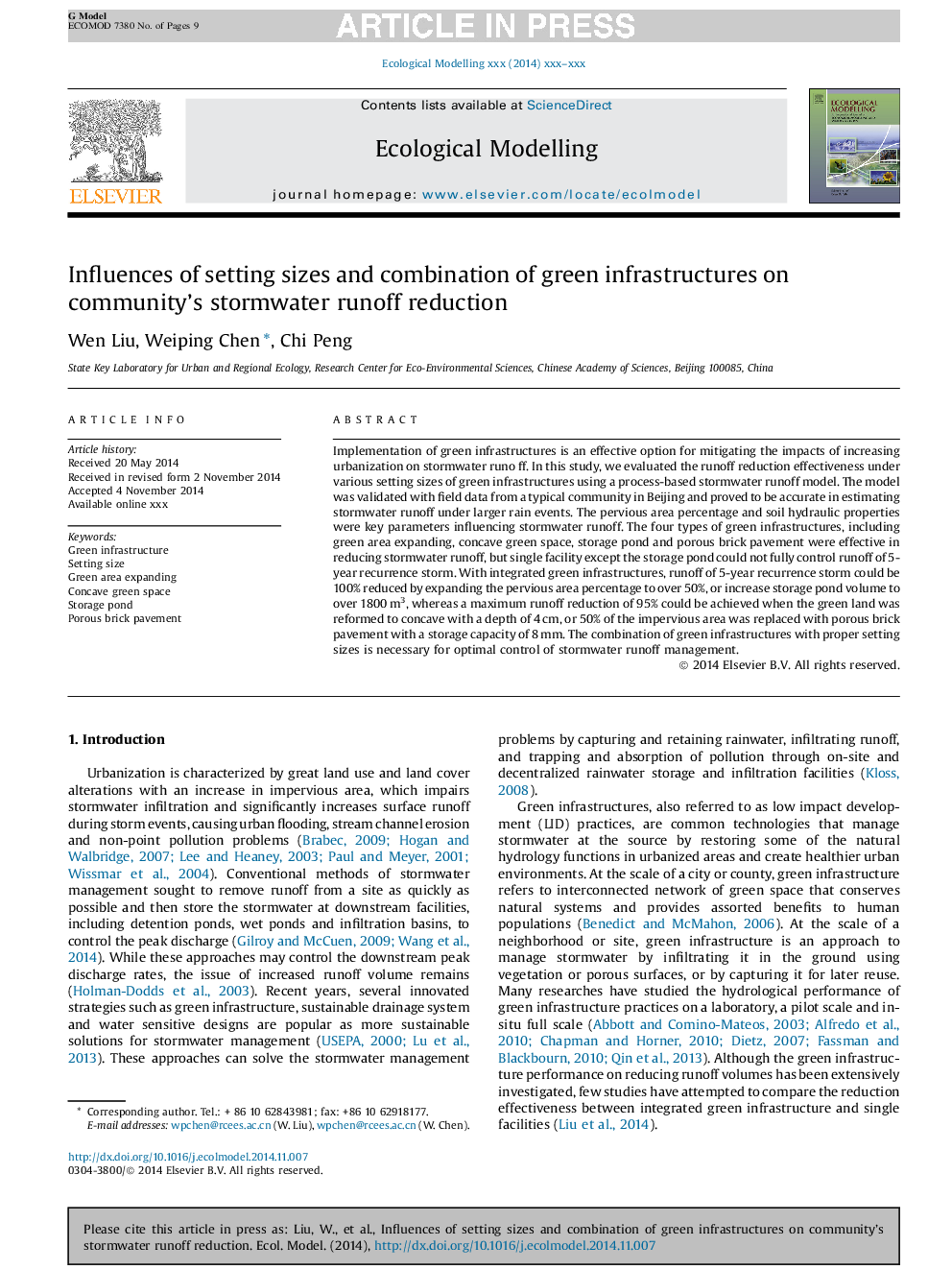| Article ID | Journal | Published Year | Pages | File Type |
|---|---|---|---|---|
| 6296425 | Ecological Modelling | 2015 | 9 Pages |
Abstract
Implementation of green infrastructures is an effective option for mitigating the impacts of increasing urbanization on stormwater runoff. In this study, we evaluated the runoff reduction effectiveness under various setting sizes of green infrastructures using a process-based stormwater runoff model. The model was validated with field data from a typical community in Beijing and proved to be accurate in estimating stormwater runoff under larger rain events. The pervious area percentage and soil hydraulic properties were key parameters influencing stormwater runoff. The four types of green infrastructures, including green area expanding, concave green space, storage pond and porous brick pavement were effective in reducing stormwater runoff, but single facility except the storage pond could not fully control runoff of 5-year recurrence storm. With integrated green infrastructures, runoff of 5-year recurrence storm could be 100% reduced by expanding the pervious area percentage to over 50%, or increase storage pond volume to over 1800Â m3, whereas a maximum runoff reduction of 95% could be achieved when the green land was reformed to concave with a depth of 4Â cm, or 50% of the impervious area was replaced with porous brick pavement with a storage capacity of 8Â mm. The combination of green infrastructures with proper setting sizes is necessary for optimal control of stormwater runoff management.
Keywords
Related Topics
Life Sciences
Agricultural and Biological Sciences
Ecology, Evolution, Behavior and Systematics
Authors
Wen Liu, Weiping Chen, Chi Peng,
